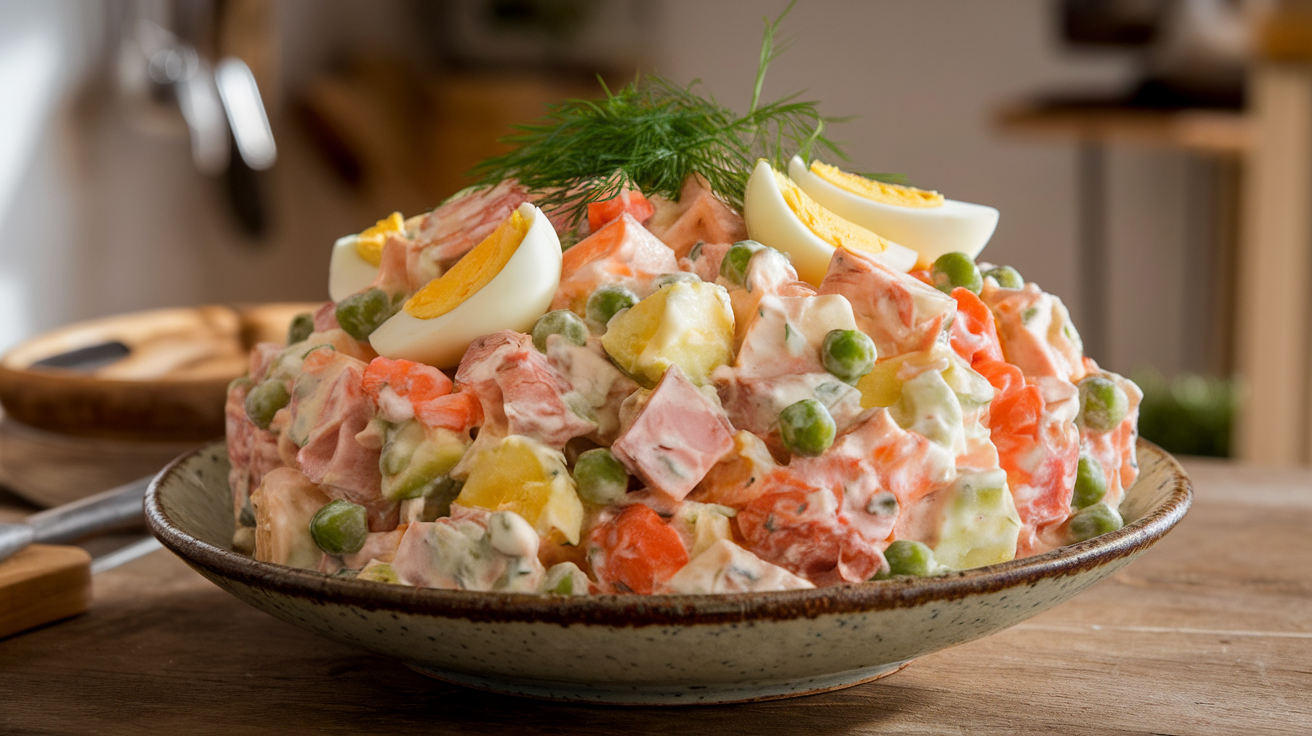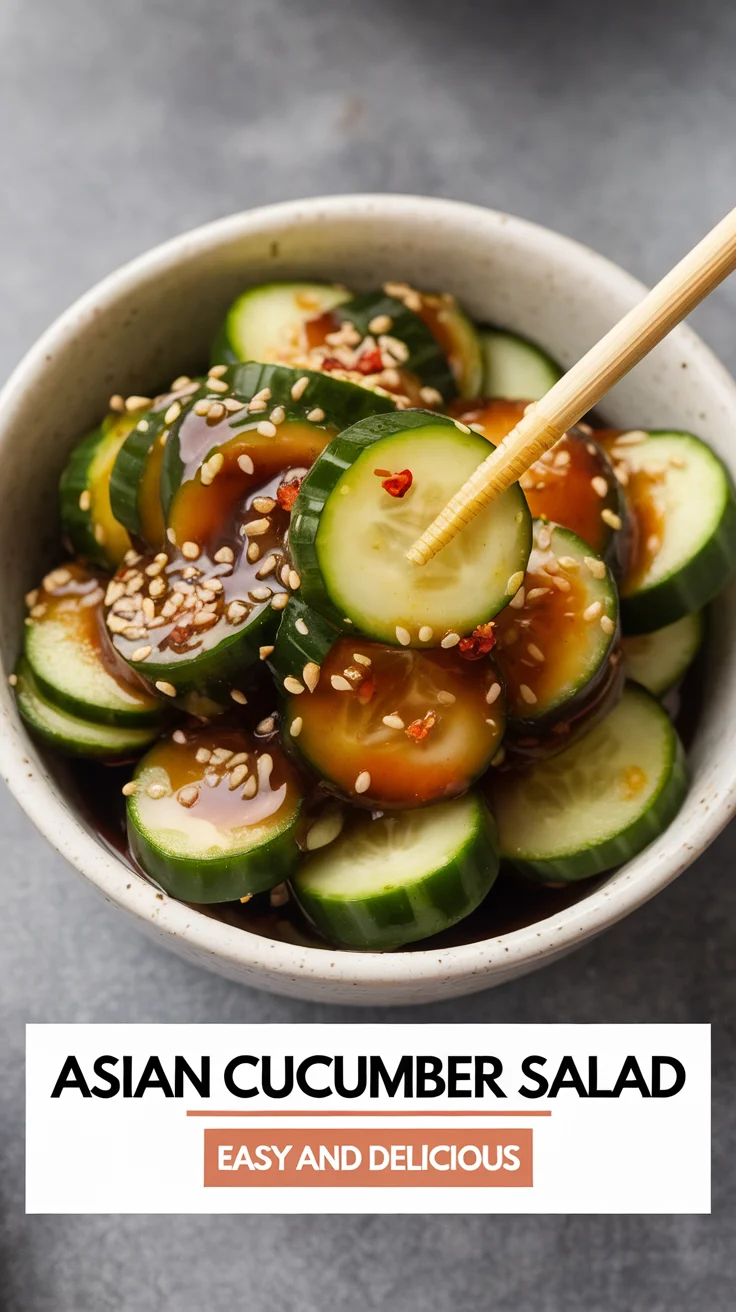Few dishes evoke the warmth of home, festivity, and rich tradition quite like Olivier Salad, also known as Russian Potato Salad. Revered as an essential part of Russian New Years Food celebrations, this creamy and colorful salad has woven itself deeply into Russian culture and cuisine over more than a century.
Whether you call it Russian salad, Olivier salad, or just a hearty potato salad with mayonnaise dressing, this iconic recipe is a perfect marriage of simple ingredients elevated to festive heights. It pairs exceptionally well with a variety of main dishes, including roasted meats and particularly as one of the classic side dishes for ham.
In this extensive article, we will explore the rich history, diverse ingredients, preparation tips, cultural significance, and creative variations such as adding tomatoes and feta to Olivier Salad. Plus, you’ll get insights on making the best homemade mayo dressing to bring this classic Russian dish to life.
The Origins and Evolution of Olivier Salad
The story of Olivier Salad begins in the mid-19th century in Moscow, where a French-Belgian chef named Lucien Olivier crafted a luxurious salad for the renowned Hermitage restaurant. The original recipe was a guarded secret and included rare and expensive ingredients such as grouse, crayfish tails, caviar, and capers.
However, as the salad’s popularity grew, the recipe evolved into a simpler, more accessible dish using common ingredients available in Soviet-era Russia. Today’s Russian potato salad is a humble but delicious mix of boiled potatoes, eggs, vegetables, pickles, and some kind of protein, all bound together with a creamy mayonnaise dressing.
This evolution reflects the broader socio-economic history of Russia, where dishes transformed based on availability and affordability, yet retained their celebratory essence. Despite these changes, Olivier Salad remains a culinary icon, especially during winter holidays.
Why Olivier Salad is a Russian New Years Food Staple
In Russia, New Year’s Eve (Novy God) is by far the most important holiday of the year, often celebrated with family feasts that include a rich variety of traditional dishes. Olivier Salad’s presence on the New Year’s table is almost mandatory—it symbolizes abundance, prosperity, and the joy of sharing.
The reasons for its popularity during New Years are:
- Ease of Preparation: It can be made a day ahead and served cold.
- Festive Appeal: The salad’s colorful appearance and creamy texture add a celebratory feel.
- Versatility: Olivier Salad pairs well with traditional holiday dishes like smoked fish, caviar, and roasted meats.
- Comfort Food: Its hearty ingredients provide warmth during cold Russian winters.
Thus, it holds a place of pride among Russian New Years Food, beloved by young and old alike.
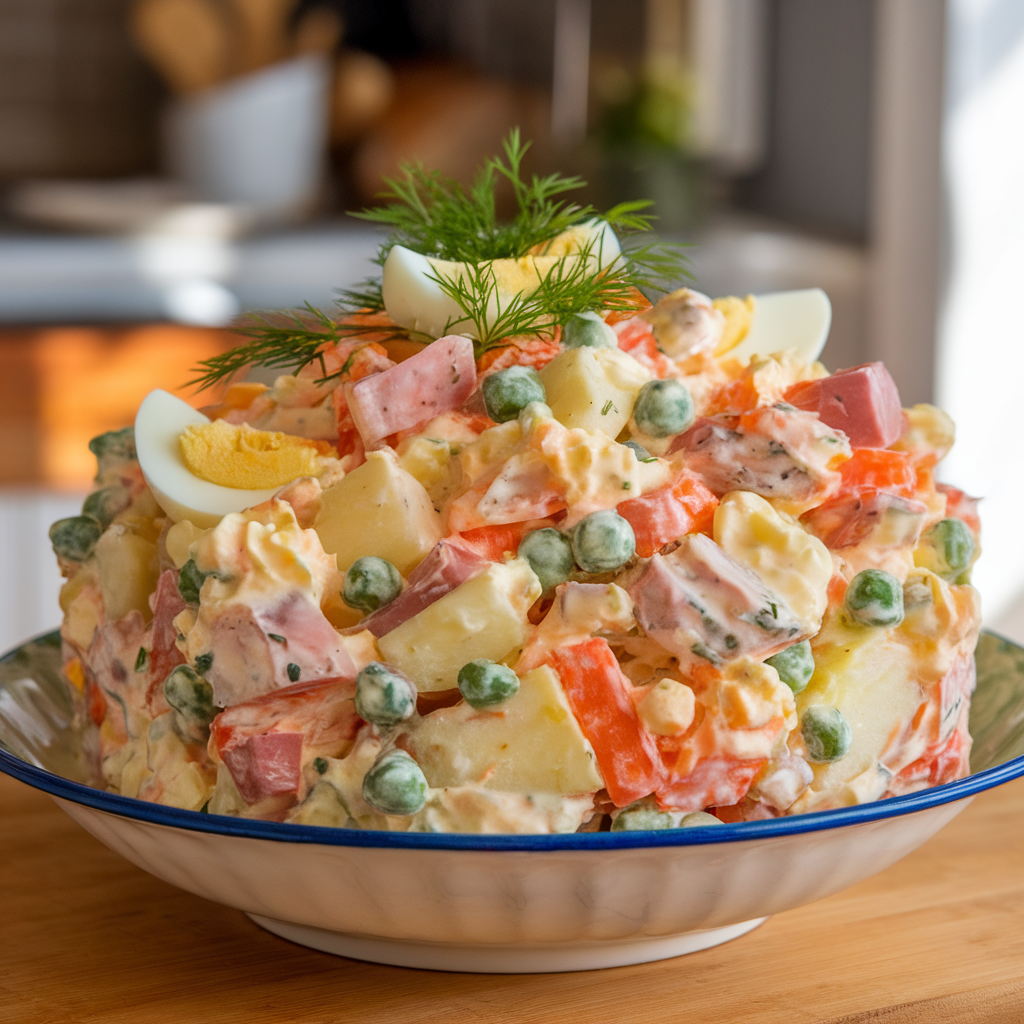
Key Ingredients in a Traditional Russian Salad Recipe
Let’s delve deeper into the essential ingredients that give Olivier Salad its classic character.
Potatoes
The foundation of Russian potato salad is, naturally, potatoes. Waxy varieties like Yukon Gold or red potatoes work best because they hold their shape well after boiling, preventing the salad from becoming mushy.
Carrots
Boiled carrots add subtle sweetness and color contrast. They should be cooked just until tender to retain a bit of texture.
Eggs
Hard-boiled eggs bring richness and a slight creaminess to the salad. Typically, they are diced or chopped and thoroughly mixed in.
Protein: Chicken or Bologna
The original Olivier Salad used expensive game meat, but today’s versions most commonly include diced cooked chicken breast or, in traditional Soviet recipes, bologna sausage. Both add a satisfying savory depth.
Pickled Cucumbers
These bring an essential tangy crunch that balances the richness of the mayonnaise dressing.
Peas
Green peas—either canned or freshly boiled—add sweetness and a pop of color.
Onions
Finely chopped onions contribute a mild sharpness and extra texture.
Mayonnaise Dressing
A rich and creamy mayo dressing ties all these elements together, making the salad luscious and indulgent.
How to Make the Perfect Mayonnaise Dressing for Olivier Salad
While store-bought mayonnaise is convenient, making your own mayonnaise dressing elevates the salad to a new level of freshness and flavor.
Homemade Mayonnaise Dressing Recipe:
- 2 egg yolks
- 1 teaspoon Dijon mustard
- 1 tablespoon lemon juice or white vinegar
- 1/2 teaspoon salt
- 1 cup neutral oil (sunflower or canola oil)
- Freshly ground black pepper to taste
Instructions:
- In a bowl, whisk the egg yolks with mustard, lemon juice, and salt until smooth.
- Slowly drizzle in the oil while whisking vigorously to emulsify the mixture.
- Continue whisking until the mayo thickens.
- Season with black pepper to taste.
- Use immediately or refrigerate for up to 2 days.
This homemade mayo has a light tang and velvety texture that perfectly complements the hearty salad.
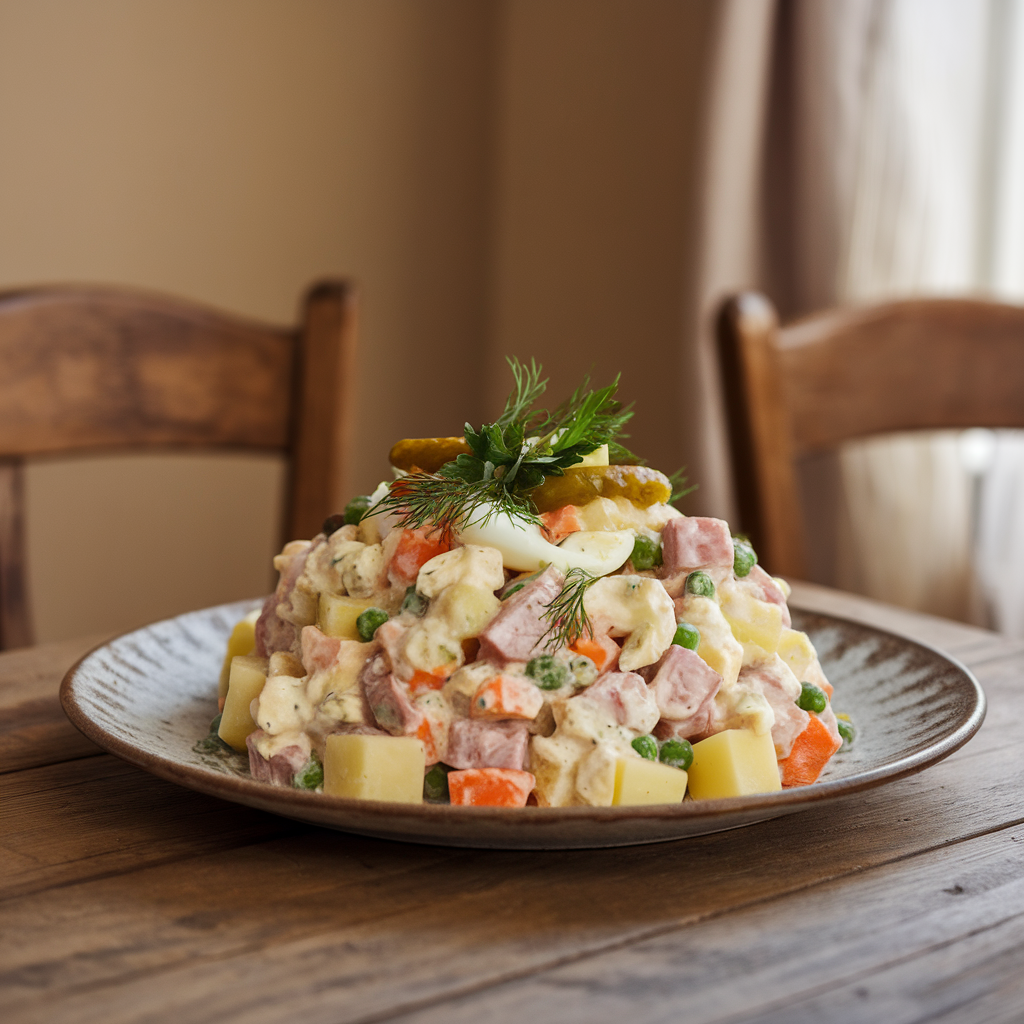
Detailed Step-by-Step Russian Potato Salad Recipe
Ingredients:
- 4 medium waxy potatoes, peeled and diced
- 3 medium carrots, peeled and diced
- 4 large eggs, hard boiled and chopped
- 1 cup cooked chicken breast, diced (or bologna sausage)
- 1 cup pickled cucumbers, diced
- 1 cup green peas, cooked or canned
- 1 small onion, finely chopped
- 1 cup mayonnaise dressing (homemade or store-bought)
- Salt and pepper to taste
- Fresh dill or parsley for garnish (optional)
Instructions:
- Cook Vegetables: Boil potatoes and carrots separately until just tender. Drain and cool.
- Prepare Eggs: Hard boil eggs for 10 minutes, peel and chop.
- Combine Ingredients: In a large bowl, mix potatoes, carrots, eggs, chicken, pickles, peas, and onions.
- Add Mayo Dressing: Fold in the mayonnaise dressing gently until all ingredients are coated.
- Season: Add salt and pepper according to taste.
- Chill: Cover the salad and refrigerate for at least 1-2 hours.
- Serve: Garnish with fresh herbs if desired. Serve cold as a side dish for ham or your main course.
Adding Tomatoes and Feta: A Modern Twist on Olivier Salad
For a refreshing spin on the classic Russian salad, try incorporating tomatoes and feta. This variation introduces a Mediterranean flair and a fresh tang that balances the creamy mayo base.
How to Add Tomatoes and Feta:
- Use firm Roma or plum tomatoes to prevent excess water.
- Dice tomatoes and gently fold into the salad just before serving.
- Crumble feta cheese and mix in for a salty, creamy contrast.
This addition is perfect for summer or lighter meals and can make Olivier Salad a vibrant side for grilled meats or seafood.
Olivier Salad as the Perfect Side Dish for Ham
During winter holidays or family gatherings, ham is a popular centerpiece. Olivier Salad shines as a side dish for ham because its creamy texture and savory tang cut through the rich, smoky flavors of the meat, creating a balanced plate.
Try serving Olivier Salad alongside:
- Honey-glazed ham
- Mustard-crusted baked ham
- Smoked ham hock
- Spiral sliced ham
Its comforting, cool qualities also refresh the palate between bites, making it a crowd-pleaser at any festive table.
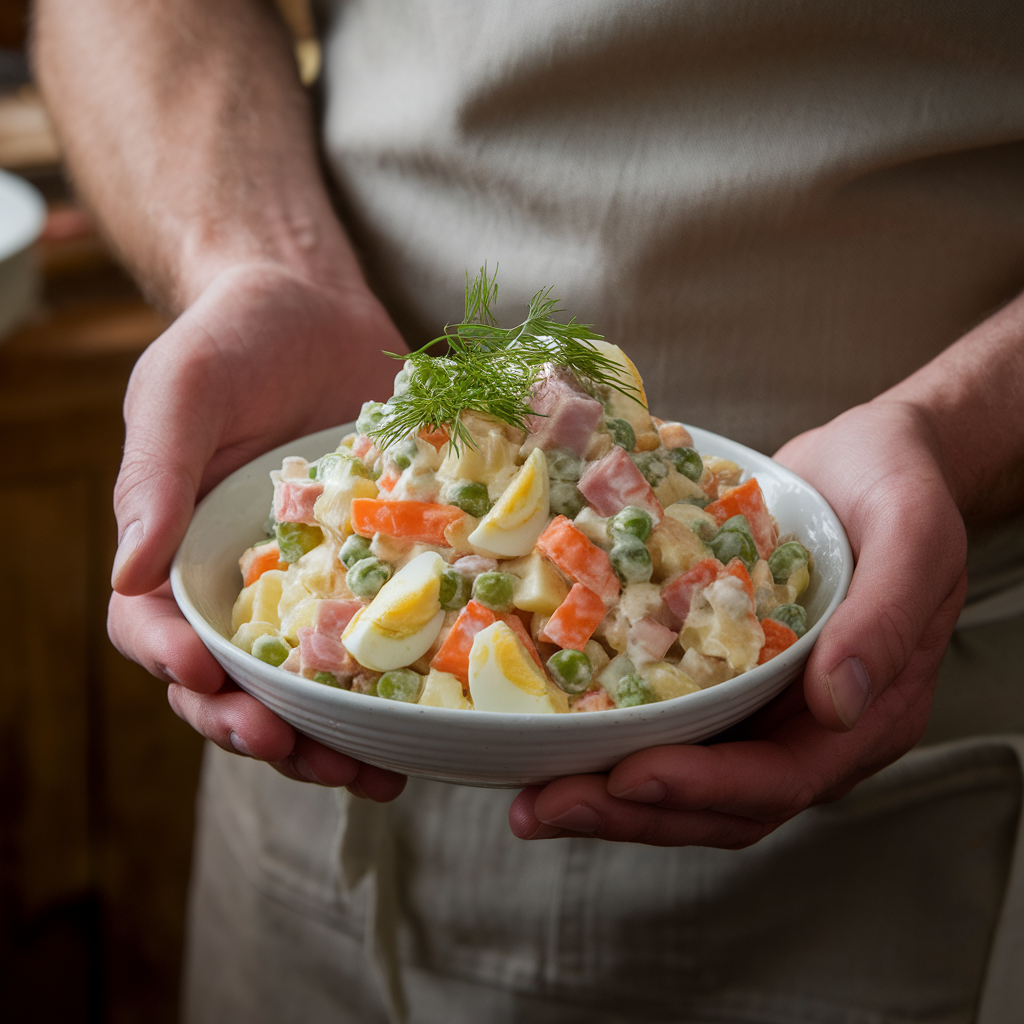
Nutritional Information and Health Tips
Traditional Olivier Salad is calorie-dense due to mayonnaise and protein content. Here’s a rough nutritional overview per serving (about 1 cup):
- Calories: 300-350 kcal
- Protein: 12-15 g (from chicken and eggs)
- Carbohydrates: 20-25 g (mostly from potatoes and carrots)
- Fat: 20-25 g (mainly from mayo dressing)
To lighten the dish:
- Use low-fat or homemade light mayo.
- Substitute half the mayo with Greek yogurt for tang and protein.
- Add more fresh vegetables like celery or cucumber.
- Use lean chicken breast instead of processed meats.
Cultural Significance of Olivier Salad in Russia and Beyond
Olivier Salad’s role transcends food—it is part of Russian cultural identity. Serving it at New Year’s symbolizes tradition, family togetherness, and celebration. It is a dish passed down through generations, with each family adding their own twist.
Across former Soviet states and countries worldwide, Olivier Salad or Russian Salad has adapted local ingredients but remains beloved. It has inspired countless variations, from seafood versions in Spain to vegan versions in the West.
Frequently Asked Questions About Olivier Salad
Can Olivier Salad be made vegan or vegetarian?
Yes, replace chicken and eggs with plant-based proteins like tofu or chickpeas, and use vegan mayonnaise. Add more vegetables like peas, carrots, and pickles for texture.
How long can Olivier Salad be stored?
Properly refrigerated in an airtight container, it lasts 2-3 days. Tomatoes should be added fresh before serving to avoid sogginess.
Can I prepare it in advance?
Definitely. In fact, chilling for a few hours or overnight helps the flavors blend beautifully.
What’s the difference between Olivier Salad and American potato salad?
Olivier Salad contains more ingredients like eggs, pickles, peas, and sometimes meat, with a creamier mayonnaise dressing, whereas American potato salad often uses mustard or vinegar-based dressings with simpler ingredients.
Tips for the Best Russian Salad
- Use fresh, quality ingredients for the best flavor.
- Dice ingredients into uniform, bite-sized pieces.
- Adjust mayonnaise quantity to your preferred creaminess.
- Add herbs like dill for authentic Russian aroma.
- Always chill before serving.
- For special occasions, decorate with boiled egg slices or fresh herbs.
Final Thoughts: Olivier Salad – A Timeless Russian Classic
Whether you’re recreating a nostalgic Russian New Years Food experience or exploring international cuisines, Olivier Salad offers a rich, creamy, and satisfying dish that’s perfect for celebrations and everyday meals alike.
Its balance of textures, flavors, and hearty ingredients tied together with luscious mayonnaise dressing make it a culinary treasure. Don’t hesitate to try creative twists like adding tomatoes and feta, or pairing it as a refreshing side dish for ham.
Enjoy this delicious slice of Russian tradition on your table, and savor the warmth and joy it brings with every bite.
